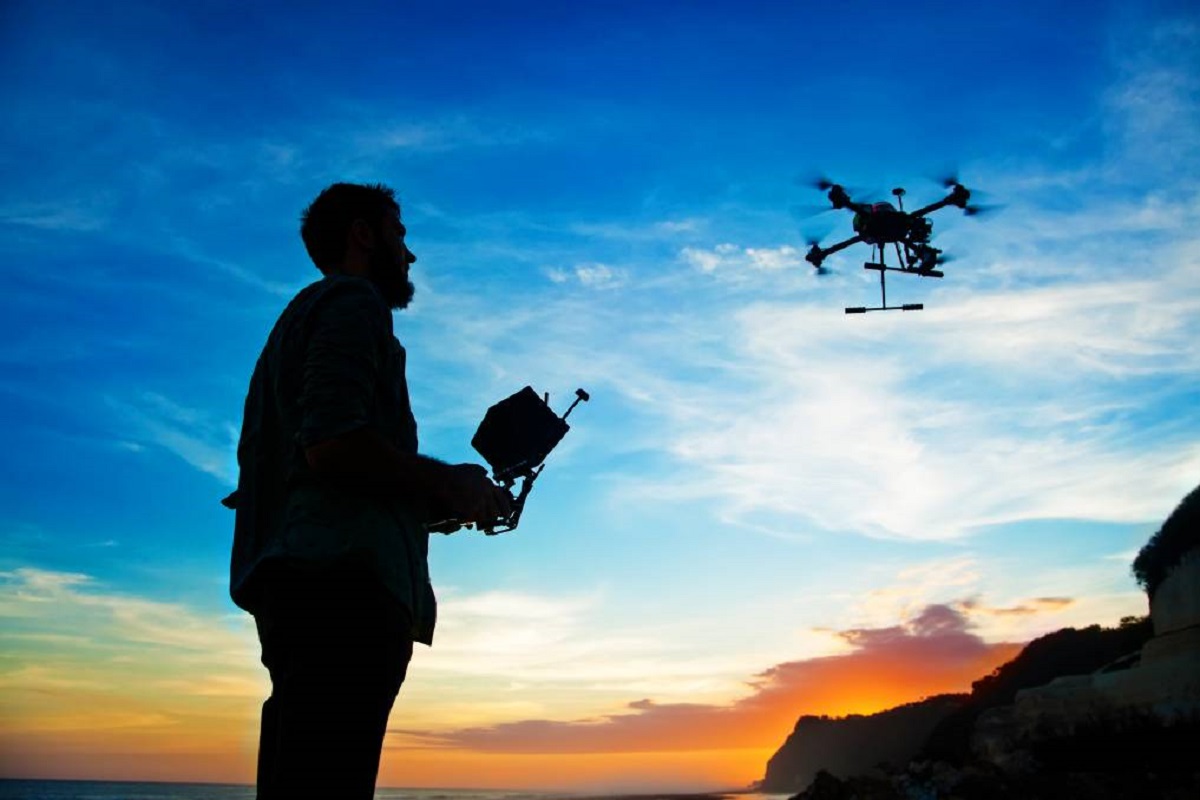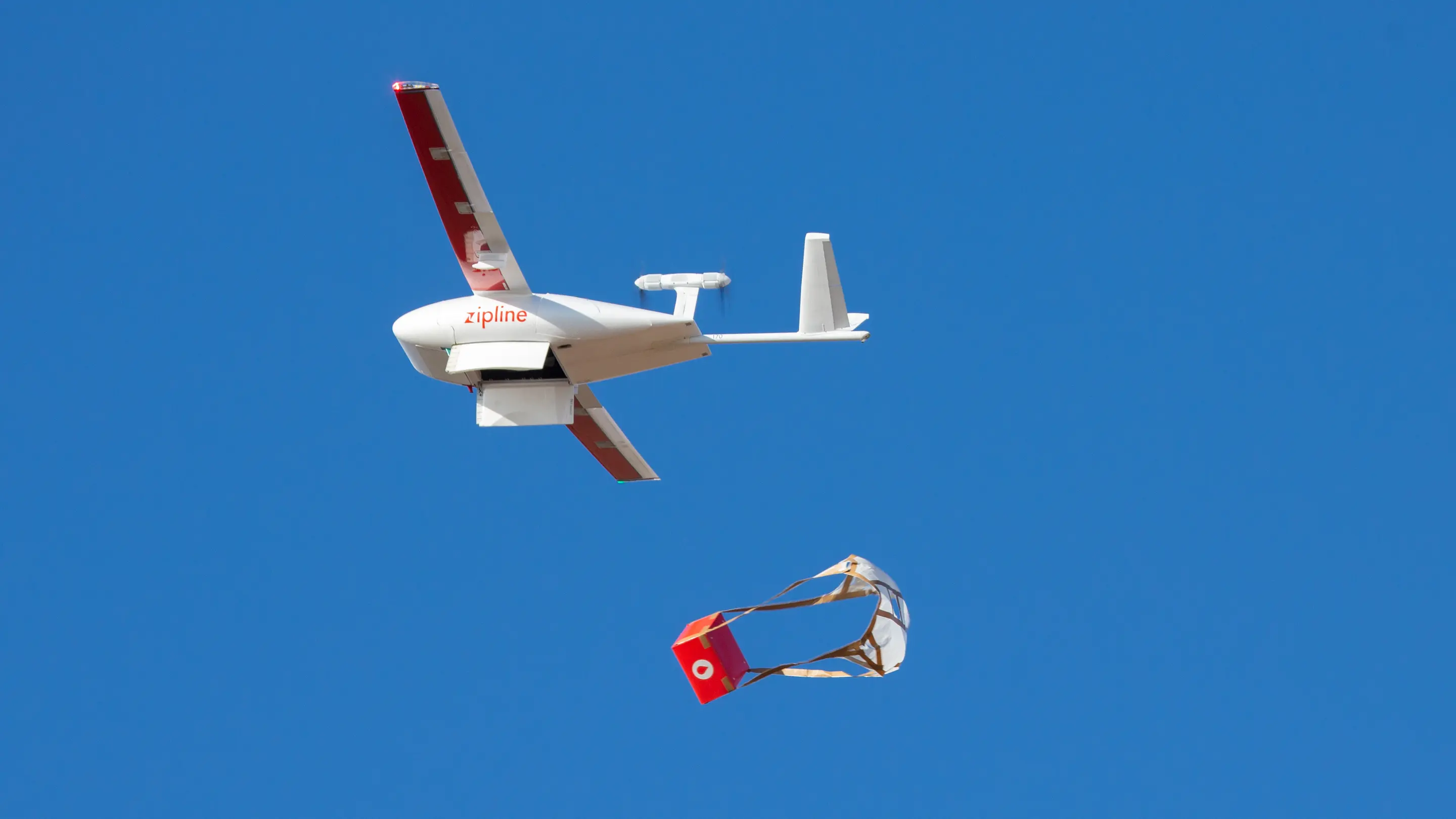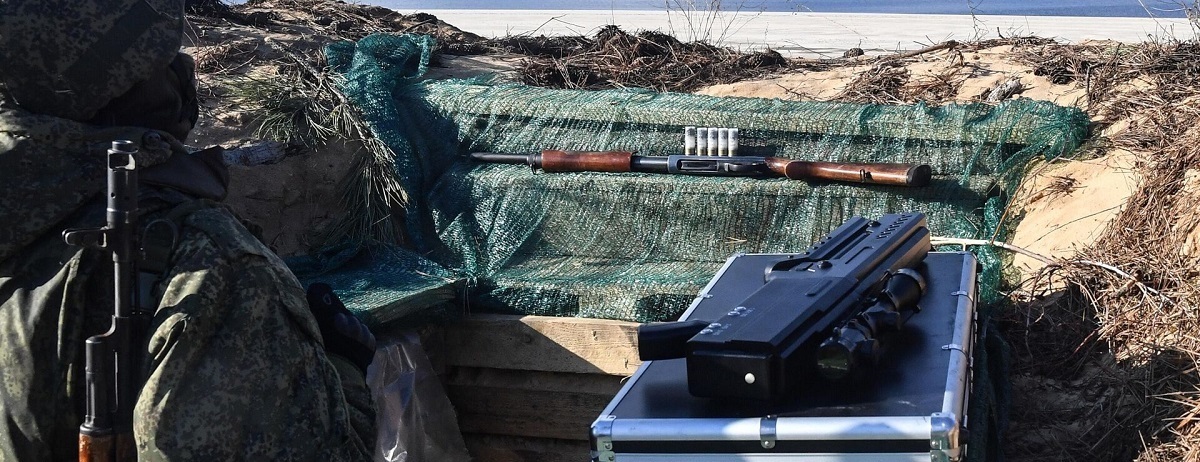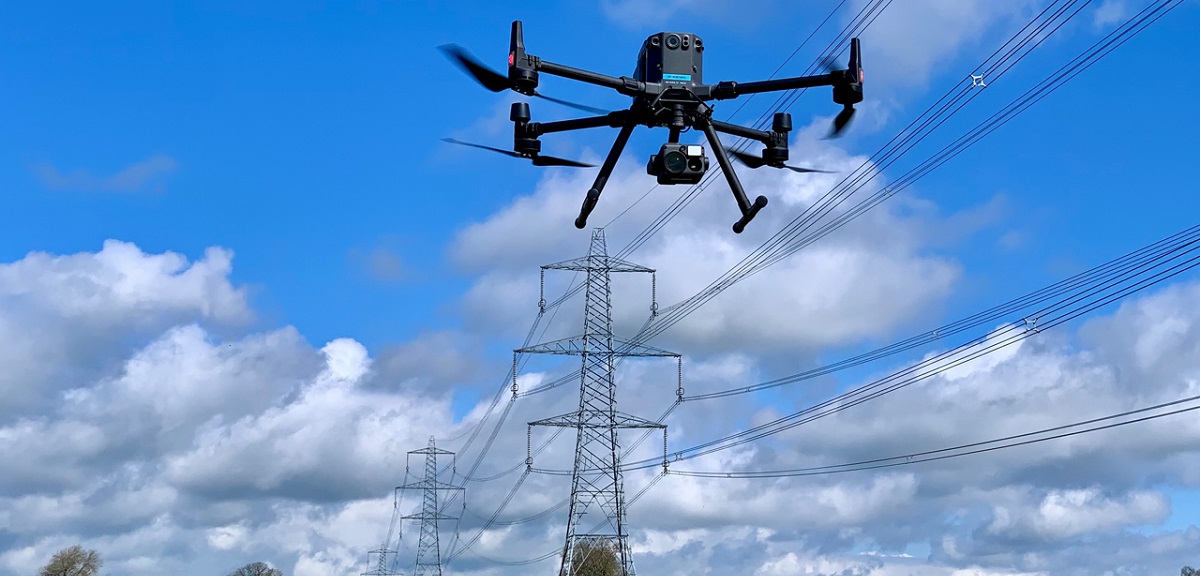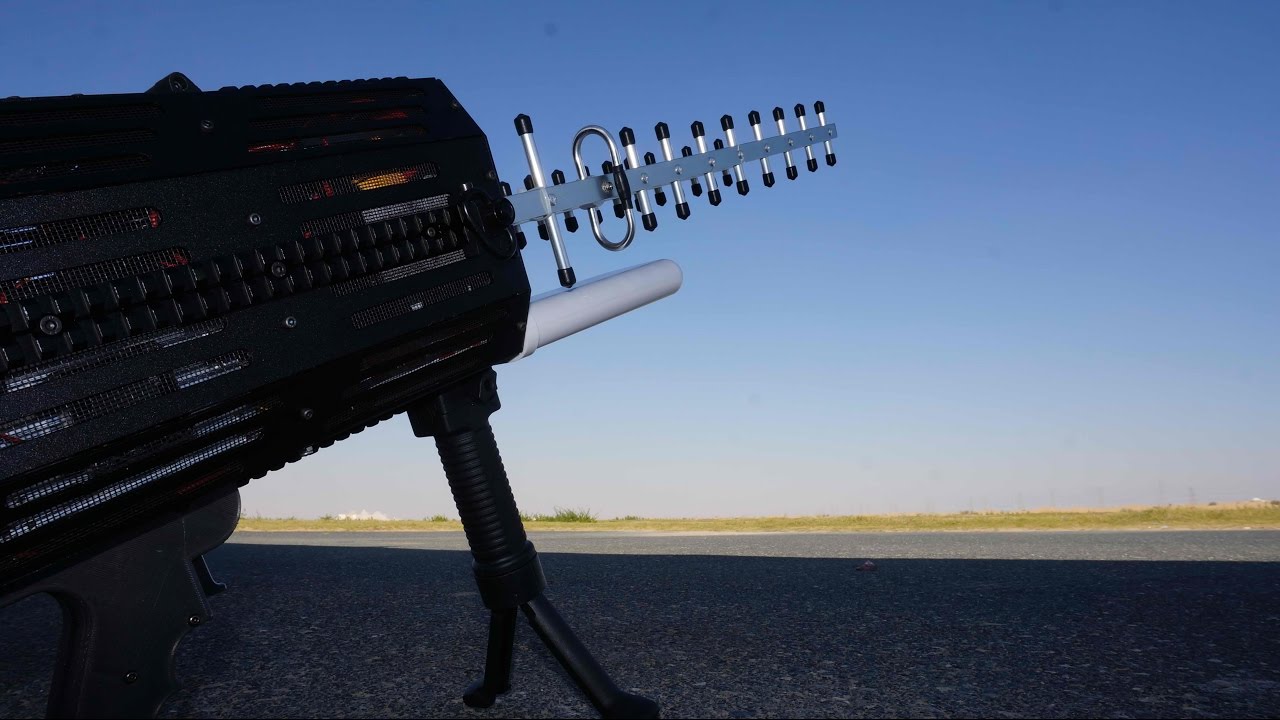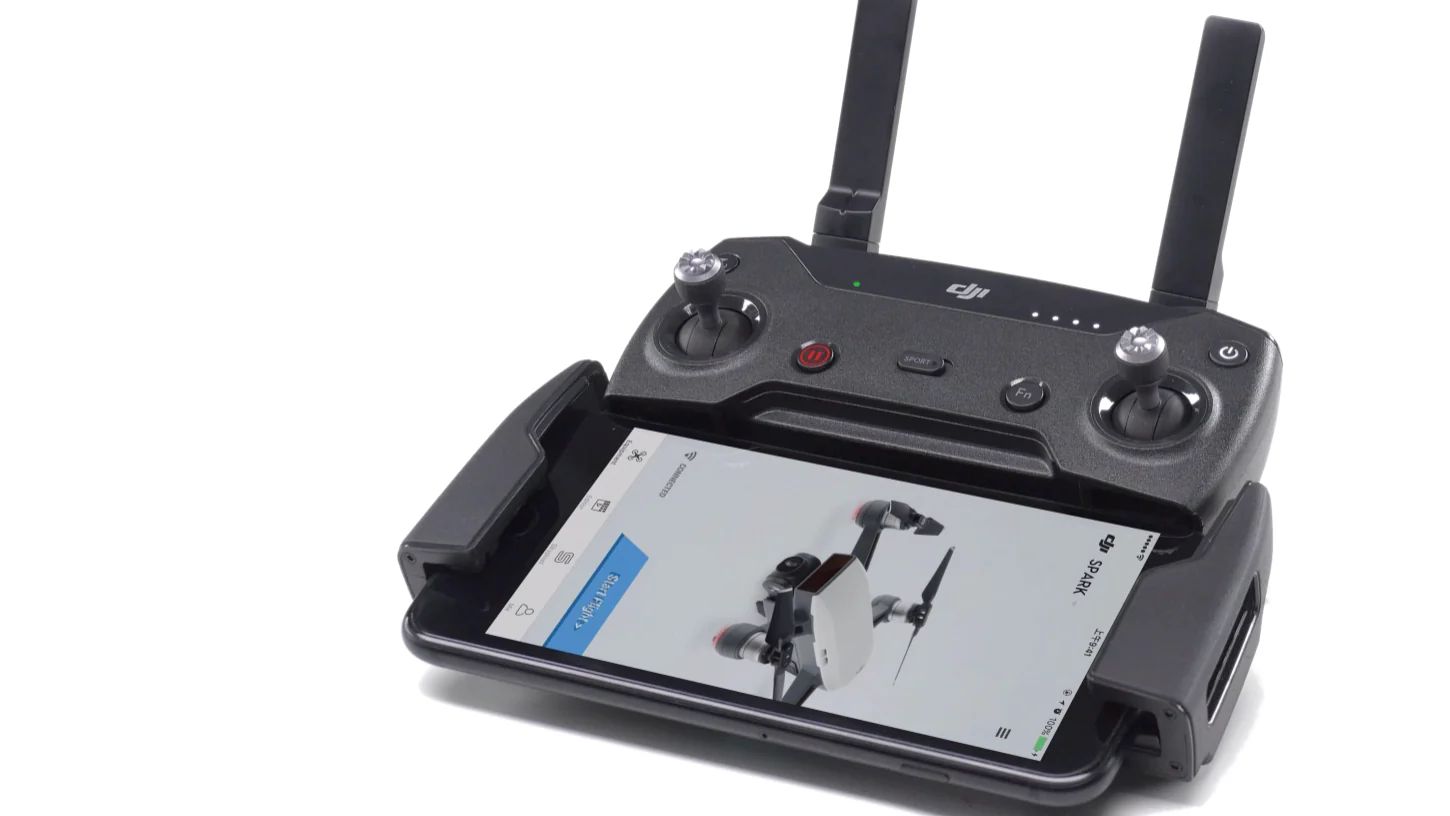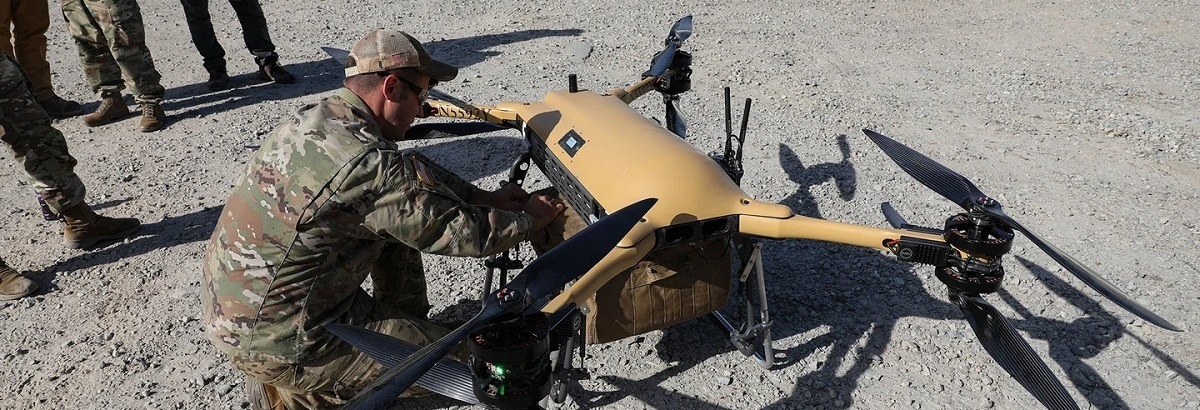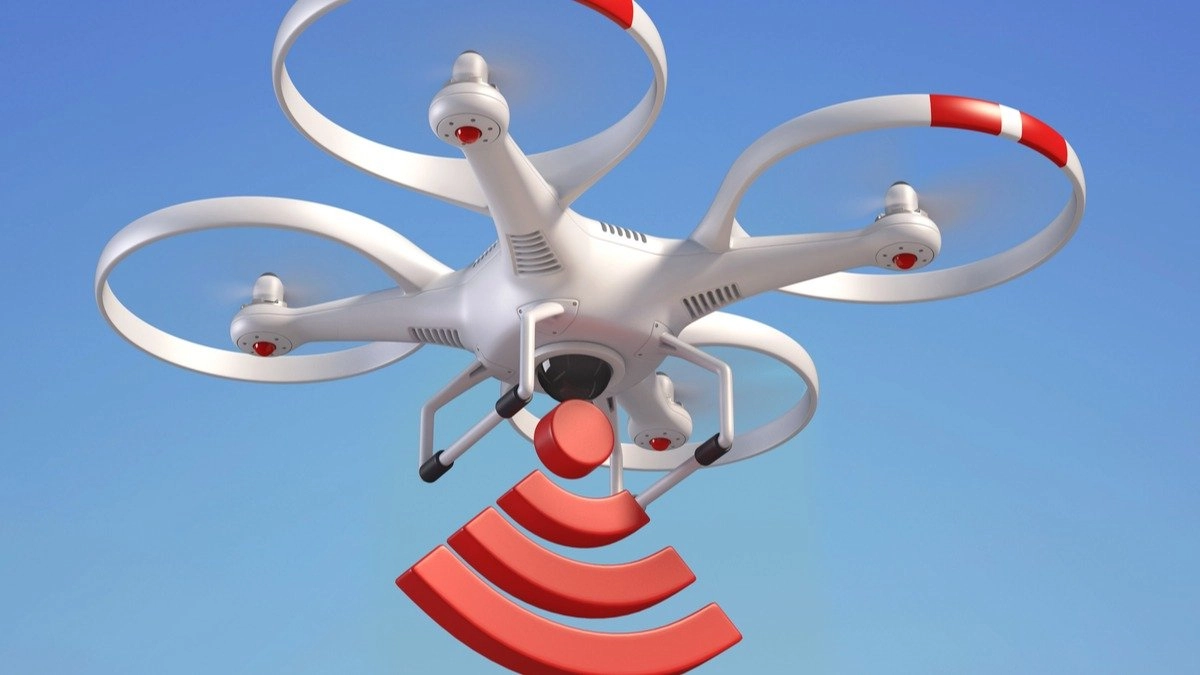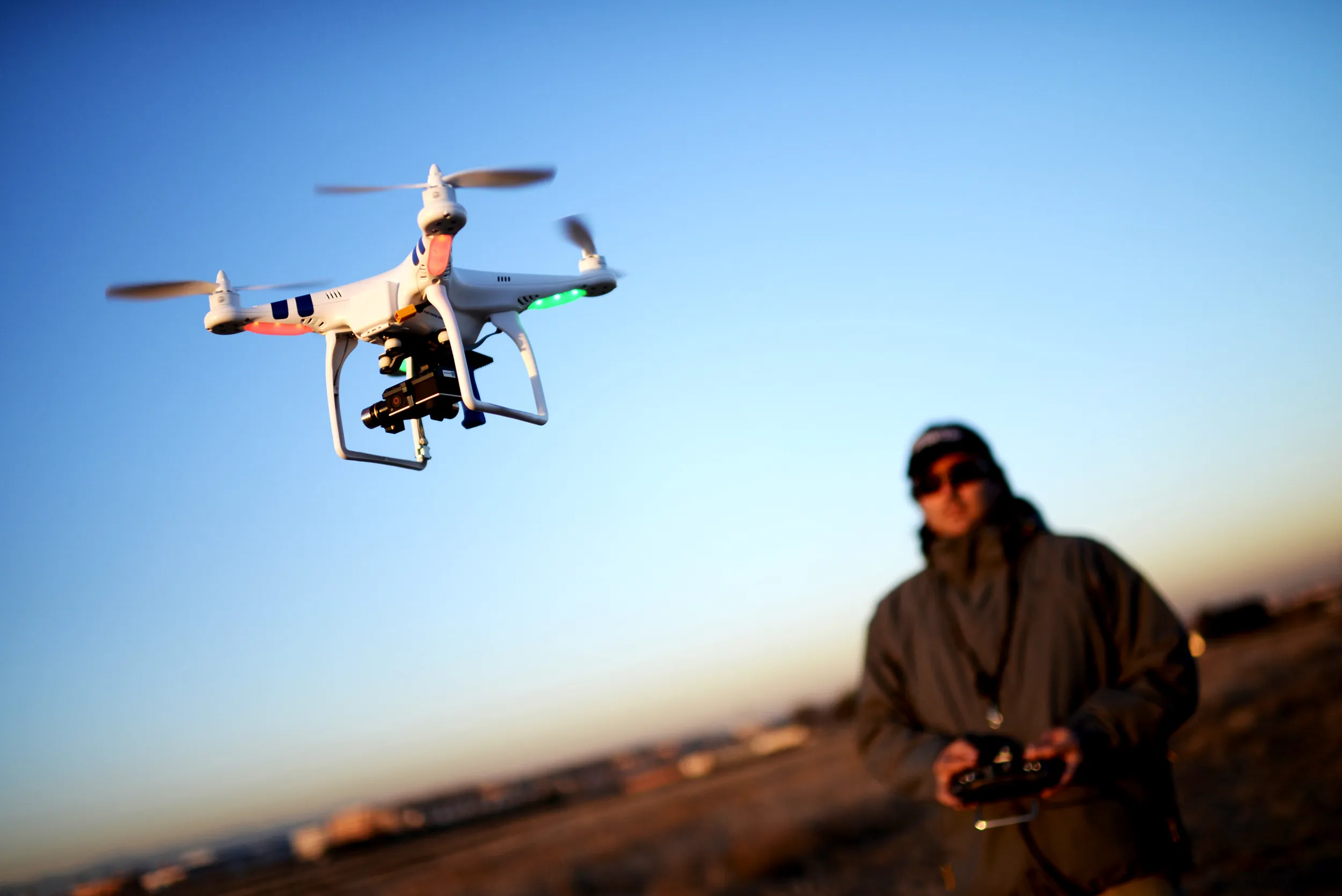Introduction
Drones, also known as unmanned aerial vehicles (UAVs), have revolutionized various industries, from photography and videography to agriculture and delivery services. These autonomous flying devices rely on advanced technology to perform a wide range of tasks, but have you ever wondered how a drone communicates with its controller?
At its core, a drone is essentially a flying computer that relies on communication protocols to establish a connection with its controller. This connection enables the pilot to send commands and receive critical data from the drone in real-time. Understanding the communication process is crucial in order to operate a drone effectively and safely.
In this article, we will explore the basics of drone technology, the types of drones available, the components that facilitate communication between drone and controller, and the different communication methods used.
So, if you’ve ever been captivated by the mesmerizing sight of a drone soaring through the sky and wondered how it is remotely controlled, read on to uncover the fascinating world of drone communication.
Basics of Drone Technology
Before delving into how a drone communicates with its controller, let’s first understand the fundamental principles of drone technology.
At its core, a drone is a small unmanned aircraft, equipped with various electronic components and sensors that allow it to fly autonomously or be controlled remotely. Drones come in various shapes and sizes, from mini quadcopters designed for recreational use to larger fixed-wing drones used in surveying and mapping.
The primary components of a drone include:
- Flight Controller: This is the brain of the drone, responsible for processing the information from the sensors and making adjustments to maintain stability and control.
- Motor and Propellers: Drones are typically equipped with multiple motors and propellers that generate lift and enable movement in the air.
- Battery: Drones rely on rechargeable batteries to power their electronic components and keep them airborne for a certain duration.
- Sensors: These include gyroscopes, accelerometers, and altimeters, which provide data on speed, orientation, and altitude to assist in flight control.
- Camera and Gimbal: Many drones are equipped with cameras and stabilizing gimbals, allowing them to capture high-quality photos and videos.
- Wireless Communication Module: This enables the drone to establish a connection with the remote controller, exchanging commands and receiving vital flight information.
Now that we have a basic understanding of drone technology, let’s explore the different types of drones available in the market.
Types of Drones
Drones come in a variety of types, each designed for specific purposes and applications. Let’s take a closer look at some of the common types of drones:
- Quadcopters: Quadcopters are perhaps the most popular type of drones. They feature four rotors arranged in a square configuration, offering excellent stability and maneuverability. Quadcopters are commonly used for aerial photography, videography, and recreational purposes.
- Fixed-wing Drones: Unlike quadcopters, fixed-wing drones resemble traditional airplanes. They can fly for longer durations and cover larger distances, making them ideal for tasks such as mapping, surveying, and agricultural spraying.
- Hexacopters and Octocopters: These drones feature six and eight rotors respectively, giving them increased lifting capacity and redundancy. Hexacopters and octocopters are often utilized in professional filmmaking, industrial inspections, and search and rescue operations.
- Racing Drones: Racing drones are lightweight and designed for high-speed racing competitions. They are equipped with powerful motors and agile maneuvering capabilities, providing an exhilarating flying experience for drone enthusiasts.
- Hybrid Drones: Hybrid drones combine the features of both fixed-wing and multi-rotor drones. They can take off and land vertically like quadcopters, but also have the ability to transition to fixed-wing mode for efficient long-distance flights.
It’s important to choose the right type of drone based on your specific needs and intended use. Whether you’re an aerial photographer, a filmmaker, or a hobbyist, there is a drone available that caters to your requirements.
Now that we have explored the different types of drones, let’s dive into the components that facilitate communication between a drone and its controller.
Components of a Drone
A drone is comprised of various components that work together to enable smooth and efficient communication between the drone and its controller. Understanding these components is crucial in comprehending the communication process. Let’s explore the key components:
- Flight Controller: The flight controller acts as the brain of the drone, processing inputs from the sensors and pilot commands. It determines the drone’s attitude, stability, and flight path.
- Remote Controller: The remote controller, also known as a transmitter, is used by the pilot to send commands and control the movements of the drone. It typically has joysticks, switches, and buttons for maneuvering and adjusting the drone’s settings.
- Wireless Transceiver: The wireless transceiver is responsible for facilitating communication between the drone and the remote controller. It transmits control signals from the remote controller to the drone and receives telemetry data from the drone.
- Telemetry System: This system collects and transmits data from the drone to the pilot or ground control station. It provides critical information such as altitude, battery level, GPS coordinates, and flight status.
- Sensors: Drones are equipped with various sensors, including accelerometers, gyroscopes, magnetometers, and GPS receivers. These sensors gather data on the drone’s position, orientation, speed, and environmental conditions in real-time.
- Battery: The battery powers the drone’s electronic components, allowing it to fly. The choice of battery affects flight time and performance, with larger drones typically requiring higher-capacity batteries.
- Propellers and Motors: Drones rely on propellers and motors to generate thrust and control their movement. The motors rotate the propellers, creating lift and propulsion for the drone.
- Camera and Gimbal: Many drones are equipped with cameras and gimbals to capture high-quality photos and videos. The gimbal helps stabilize the camera, ensuring smooth footage even during the drone’s movements.
These components work together seamlessly to facilitate communication and control between the drone and its controller. The next section will explore the different communication methods used by drones.
Communication between Drone and Controller
The communication between a drone and its controller is a critical aspect of operating a drone effectively and safely. It involves a two-way exchange of information, allowing the pilot to send commands and receive real-time data from the drone. Let’s explore the various aspects of this communication process:
1. Radio Frequency Communication: Most drones utilize radio frequency (RF) communication to establish a connection between the drone and the remote controller. The remote controller sends control signals to the drone via RF transmission, specifying the desired flight commands such as altitude, speed, and direction. The drone receives these signals and processes them, executing the commanded actions.
2. Control Protocols: To standardize communication, drones and remote controllers use specific control protocols such as the popular UAV Control Protocol (UAVCP) or the Open Drone Control Protocol (OCDP). These protocols define the format and structure of the commands and data exchanged between the drone and the controller.
3. Data Transmission and Feedback: In addition to sending control commands, the drone also provides feedback to the pilot. This feedback can include telemetry data such as the drone’s current position, altitude, battery level, and GPS coordinates. This information allows the pilot to monitor the drone’s status and make informed decisions during flight.
4. Low Latency Communication: Drones require fast and responsive communication to ensure quick and precise control. Low latency communication is crucial for real-time control and feedback. By minimizing the time delay between sending a command and the drone’s response, the pilot can maintain precise control over the drone’s movements.
5. Range and Limitations: The range of communication between the drone and the controller depends on various factors, including the type of drone, the frequency used for communication, and the presence of any obstacles or interference. It’s important for the pilot to understand the range limitations and maintain a reliable connection to ensure safe operation of the drone within the communication range.
By establishing a reliable and responsive communication link between the drone and the controller, pilots can enjoy precise control over their drones and gather critical flight data in real-time. The next section will explore the different communication methods used in drone technology.
Radio Frequency Communication
Radio frequency (RF) communication is the primary method used by drones to establish a connection between the drone and the remote controller. This wireless communication enables the pilot to send control commands to the drone and receive real-time telemetry data. Let’s explore the key aspects of radio frequency communication in drone technology:
1. Frequency Bands: Drones operate on various frequency bands, including 2.4 GHz and 5.8 GHz. These frequency bands have specific advantages and limitations. The 2.4 GHz band offers longer range but is more prone to interference from other devices, while the 5.8 GHz band provides a shorter range with less interference.
2. Radio Transmitters and Receivers: The remote controller is equipped with a radio transmitter, while the drone has a corresponding radio receiver. The transmitter sends control signals to the drone, specifying desired flight commands. These signals are received by the drone’s receiver, which decodes and processes the commands.
3. Frequency Modulation: To transmit and receive data over radio frequencies, drones utilize frequency modulation (FM) techniques. Frequency modulation involves varying the carrier wave’s frequency to encode the information being transmitted. This modulation technique ensures reliable and secure communication between the drone and the controller.
4. Signal Strength and Range: The range of radio frequency communication depends on several factors such as the power output of the transmitter, the antenna quality, and any obstructions or interference in the environment. In open spaces with minimal obstacles, the range can reach several kilometers. However, it is important for drone pilots to always operate within their visual line of sight and comply with local regulations regarding range limitations.
5. Interference and Security: Radio frequency communication can be susceptible to interference from other devices operating on the same frequency, such as Wi-Fi routers or other drones. To ensure secure and uninterrupted communication, drones may utilize frequency-hopping or spread-spectrum techniques, which allow them to switch between multiple frequencies to avoid interference.
Radio frequency communication plays a vital role in establishing a reliable and responsive connection between the drone and the remote controller. By utilizing specific frequency bands, modulation techniques, and addressing interference concerns, drone pilots can enjoy seamless control and accurate flight data during their operations.
Control Protocols
In order to facilitate effective communication between the drone and the remote controller, specific control protocols are employed. These protocols define the format and structure of the commands and data exchanged between the drone and the controller, ensuring compatibility and standardization. Let’s explore some commonly used control protocols in drone technology:
1. UAV Control Protocol (UAVCP): The UAV Control Protocol is a widely adopted control protocol used in the drone industry. It defines a standardized set of commands and data formats for controlling and monitoring the drone’s functions. UAVCP ensures interoperability among different drones and remote controllers from various manufacturers.
2. Open Drone Control Protocol (OCDP): The Open Drone Control Protocol is an open-source protocol that offers flexibility and customization options for controlling drones. It allows developers to create their own control interfaces and integrate them with the drone’s firmware. OCDP enables advanced functionalities and specialized applications tailored to specific drone operations.
3. Drone Management Interface (DMI): The Drone Management Interface is a protocol that focuses on managing and supervising drone operations, rather than controlling the flight directly. DMI facilitates communication between the drone and a ground control station, providing operators with information on flight status, battery levels, and GPS coordinates.
4. Vendor-Specific Protocols: Some drone manufacturers have their own proprietary control protocols to ensure compatibility and optimal performance with their specific drone models. These protocols may offer unique features and functionalities, but they may also be limited to a specific brand or product line.
Control protocols play a crucial role in enabling seamless communication and control between the drone and the remote controller. Standardized protocols ensure interoperability, allowing drone pilots to use different remote controllers with various drone models. These protocols also provide the foundation for developers to create custom control interfaces and applications, enhancing the capabilities and versatility of drone technology.
Data Transmission and Feedback
In addition to sending commands, drones also provide valuable feedback and transmit essential data to the remote controller during flight. This data exchange ensures that the pilot has real-time information about the drone’s status and performance. Let’s explore the key aspects of data transmission and feedback in drone technology:
1. Telemetry Data: Drones collect various telemetry data, including altitude, speed, battery level, GPS coordinates, and flight parameters. This data is transmitted from the drone to the remote controller in real-time, allowing the pilot to monitor the drone’s status and make informed decisions during flight operations.
2. Real-time Video Feed: Many drones are equipped with cameras and offer a live video feed to the remote controller or a separate display device. This video feed allows the pilot to view the drone’s perspective, enabling precise control and facilitating tasks such as aerial photography, videography, and inspection operations.
3. Flight Logs: Drones often maintain flight logs that record various parameters and events during each flight. These logs include data such as flight duration, distance traveled, battery usage, and any anomalies or errors encountered. Flight logs are valuable for post-flight analysis, troubleshooting, and regulatory compliance.
4. Real-time Alerts and Warnings: Drones can transmit real-time alerts and warnings to the remote controller, notifying the pilot of critical events or conditions. These alerts may include low battery warnings, proximity to no-fly zones, strong winds, or any other potential safety hazards. The pilot can then take appropriate actions based on the received alerts.
5. Data Encryption and Security: As the transmitted data may include sensitive information, it is crucial to safeguard the communication between the drone and the controller. Encryption techniques are used to secure the data transmission, ensuring that it cannot be intercepted or tampered with by unauthorized entities.
By facilitating the transmission of telemetry data, real-time video, flight logs, and alerts, drones enable pilots to have a comprehensive understanding of the drone’s operations. This feedback and data transmission enhance situational awareness, safety, and precision during drone flights.
Low Latency Communication
In drone technology, low latency communication refers to minimizing the delay between the transmission of control commands from the remote controller to the drone and the drone’s response to those commands. This real-time communication is crucial for precise control and ensuring an optimal flying experience. Let’s explore the key aspects of low latency communication in drones:
1. Fast Response Time: Low latency communication enables the drone to respond swiftly to control commands. Whether it’s adjusting altitude, changing direction, or executing a specific maneuver, the drone’s quick response allows for precise and immediate control, enhancing the pilot’s flying experience.
2. Real-time Telemetry: Low latency communication ensures that telemetry data, such as altitude, speed, and battery level, is transmitted from the drone to the remote controller in real-time. This allows the pilot to monitor the drone’s status and make prompt decisions based on accurate and up-to-date information.
3. Efficient Data Transmission: Low latency communication requires efficient data transmission protocols. These protocols prioritize the delivery of critical control commands and feedback while minimizing unnecessary data transfer. Efficient data transmission helps reduce the overall latency, improving the responsiveness of the drone.
4. High Bandwidth: Low latency communication often relies on high-bandwidth wireless communication channels, such as those operating in the 2.4 GHz or 5.8 GHz frequency bands. These high-bandwidth channels allow for the quick transfer of data packets, reducing the time it takes for control commands to reach the drone and for feedback to reach the remote controller.
5. Antenna Performance: The performance of the antennas used in both the remote controller and the drone’s communication system plays a crucial role in maintaining low latency communication. High-quality antennas with optimal gain and signal quality help ensure reliable and responsive communication between the drone and the remote controller.
By minimizing the delay in communication between the drone and the remote controller, low latency communication enables precise control, enhances situational awareness, and improves the pilot’s overall flying experience. It allows for real-time responsiveness, making drone operations smoother and more efficient.
Range and Limitations
The range of communication between a drone and its controller refers to the maximum distance at which the two devices can maintain a reliable connection. However, it’s important to understand that various factors can affect this range, and there are limitations to be considered. Let’s explore the range and limitations of drone communication:
1. Transmission Power: The transmission power of both the drone’s wireless transceiver and the remote controller plays a significant role in determining the communication range. Higher transmission power can extend the range, but it is subject to regulatory restrictions, especially in urban areas or densely populated regions.
2. Antenna Quality: The quality of the antennas used in the drone and the remote controller plays a crucial role in signal transmission and reception. High-quality antennas with better gain and signal quality can help extend the communication range.
3. Frequency and Interference: The frequency at which the drone and the controller communicate can influence the range. Additionally, the presence of interference from other devices operating on the same frequency can impact communication performance and limit the range.
4. Physical Obstacles: Physical obstacles, such as buildings, trees, and terrain, can obstruct the transmission signals and limit the communication range. Line-of-sight between the drone and the remote controller is crucial for maintaining a reliable connection, especially in environments with numerous obstacles.
5. Regulatory Restrictions: Drone operations are subject to local regulations, which may include restrictions on the maximum allowable range. It’s important for drone pilots to be aware of and comply with these regulations to ensure safe and legal operation of their drones.
Understanding the limitations of communication range is crucial for safe and successful drone operations. Operating within the communication range not only ensures a reliable connection but also allows the pilot to maintain visual line-of-sight with the drone, comply with regulations, and maintain control throughout the flight.
Conclusion
Communication between a drone and its controller is a fundamental aspect of operating drones effectively and safely. By understanding the basics of drone technology, the types of drones available, and the components involved in communication, we gain insight into the intricate world of drone communication.
We explored how drones utilize radio frequency communication to establish a connection between the drone and the remote controller. This communication enables the pilot to send control commands and receive real-time telemetry data, ensuring precise control and situational awareness during flight operations.
We also discussed the importance of control protocols, which standardize communication between drones and remote controllers. These protocols ensure compatibility and facilitate interoperability among different drone models and remote controllers.
The transmission of data and feedback in real-time is vital for optimizing drone operations. By providing telemetry data, real-time video feeds, flight logs, alerts, and warnings, low latency communication allows pilots to make informed decisions and maintain control over their drones.
However, it’s important to acknowledge the range limitations of drone communication. Factors such as transmission power, antenna quality, frequency, physical obstacles, and regulatory restrictions can affect the communication range. Pilots must operate within the recommended range to maintain a reliable connection and ensure safe and legal operation.
In conclusion, mastering the art of drone communication enhances the pilot’s ability to operate drones with precision and efficiency. By understanding the technology, employing proper control protocols, and being aware of the communication range, drone pilots can harness the full potential of these aerial devices and elevate their drone flying experience.







